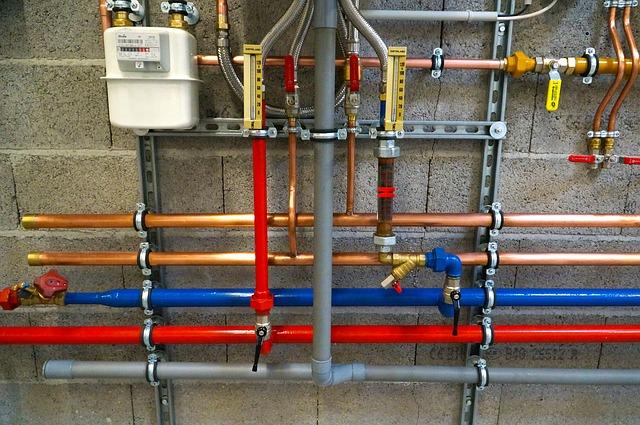House Plumbing Pipings

House plumbing pipings carry water throughout the house. They come in a variety of different sizes and materials.
Knowing the basics of house plumbing pipings can help you make informed decisions when it comes to repair or replacement. This article will cover the most common types of residential pipings and how they work.
Distribution Pipes
Plumbing pipes are used to deliver water to faucets, toilets, laundry machines and lawn sprinklers in a house. Depending on the system, they can be made of various materials.
A home’s water supply system routes municipal water from the streets to one’s house and branches to faucets, toilets, showers, bathtubs and other appliances like the washing machine, the water heater, and the dishwasher. These pipings and fittings are usually made of plastic, galvanized iron or copper.
They range in diameter from 1/2 inch to 4 inches or more.
Several types of residential plumbing pipes are available, and they can be found in almost any type of home. Among the most common are flexible PVC, PVC with stainless steel ends, and cross-linked polyethylene (PEX) pipes.
These pipings can be found under sinks, behind the washer and dryer, or at the back of the shower. They run through ceiling joists in the basement and floor joists in the attic, between the studs.
Vent Pipes
The drain-waste vent system in your house is designed to remove water and waste from your home efficiently. It consists of drainage pipes that carry waste to the city sewer or septic tank and vent pipes that bring fresh air into plumbing fixtures like your sink and toilet.
The vent system keeps sewer gases out of the structure while allowing oxygen to flow in, which helps break down waste material more quickly and easily. This prevents toxic fumes from being inhaled into the home and makes it safer for family members to stay in the home.
A vent pipe is a vertical pipe that extends from your house’s plumbing system up through the roof. These pipes connect to the drain line and release vented air when the water in the pipe clings to the sides of it, or when a sink drains. The air is then sent outside the home through a vent. These pipes also help control air pressure within your plumbing, which can help avoid problems with drainage and leaks.
Sewer Pipes
Every fixture and appliance in your home has a drain pipe connected to it. These pipes are angled downward at about 1/4 inch per foot of pipe and use gravity to facilitate the flow of waste water.
Sewage pipings in your house are part of the DWV system and remove wastewater from sinks, tubs, showers, toilets, and laundry. They also connect to the main sewage line underground and deliver it to either a septic tank or a public sewer.
Plumbing codes require each drain to have a trap to prevent backflow. These U-shaped traps keep standing water from allowing sewer gasses to enter the home through the drain pipe.
Your DWV system also includes vent pipes near each sink, toilet, and bathtub/shower drain to send sewer gases out through your roof, eliminating the chance of odor leaks. If you’re hearing bubbles, gurgling, or smell sewer gas in your bathroom, your vent pipe might be clogged and needs immediate attention from a professional plumber.
Water Heater Pipes
Your home’s plumbing system is a network of pipes that bring water into your house and remove waste. Freshwater enters your home through faucets, and waste exits your house through drains.
A basic understanding of your house plumbing system can help you prevent problems in the future. It also lets you know where to look for any issues that might be occurring.
The house plumbing system has three main components: the water supply, water heating and drainage systems. The first, the water supply system, brings water into your home from the water main or a well.
From there, it distributes hot and cold water to every fixture in the house that needs it. It also supplies water to appliances like dishwashers and clothes washers.




Leave a Reply